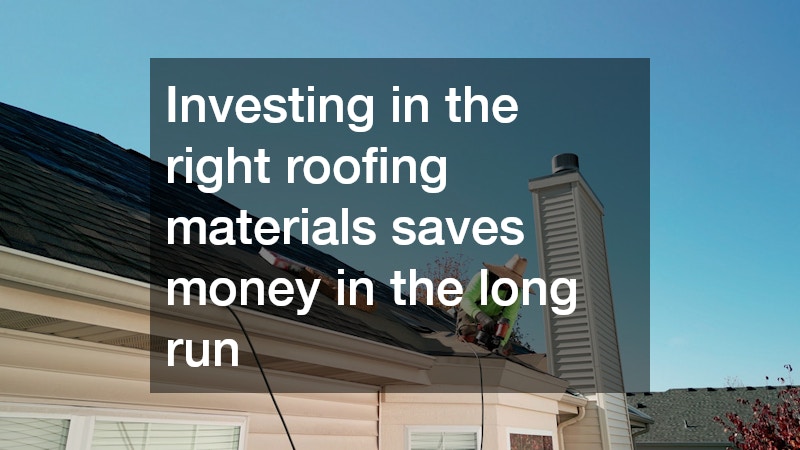Replacing a roof is one of the significant investments homeowners face. Understanding the factors that contribute to the overall cost can help save money. Knowing where to make strategic decisions can impact the final expense.
The price of roof replacement varies depending on materials, labor, and location. Prices can range from a few thousand dollars to tens of thousands, depending on the roof’s size and complexity.
Local roof replacements often face pricing fluctuations due to labor availability and regional economic factors.
Homeowners should research and compare prices before deciding. Considering local markets and opting for competitive bids can result in significant savings. Practical decisions in the initial planning phase can save unexpected costs later.
Choosing the Right Materials
Investing in the right roofing materials saves money in the long run. While more expensive upfront, materials like metal or slate can last longer and require less maintenance. Durable materials reduce the need for frequent replacements, yielding financial savings over time.
Composite shingles are a cost-effective alternative, providing durability without breaking the bank. Discussing options with local contractors can reveal unexpected bargains and suitable material types for your region. Understanding material benefits versus costs helps in making informed decisions.
Consider energy-efficient materials that may offer savings through reduced energy bills. Roofs designed to reflect sunlight can reduce air conditioning costs during warmer months. Choosing materials that qualify for energy subsidies or rebates additionally lowers expenses.
Selecting a Reputable Contractor
Hiring the right contractor can significantly impact the quality and cost of roof replacement. Research and verify contractors’ credentials, looking for licensed, insured, and bonded professionals. Checking reviews and asking for references can prevent choosing unreliable services.
Local roof replacements can benefit from contractors who understand regional climate impacts on roofing materials. They can recommend the best materials and techniques suited for your area’s conditions. A dependable contractor helps avoid costly mistakes and ensures a job done right the first time.
Negotiating with contractors for better terms can also save money. Obtaining multiple estimates allows for competitive pricing, potentially lowering costs. Emphasizing quality over mere price ensures you don’t sacrifice durability for short-term savings.
Timing Your Roof Replacement
The timing of your roof replacement can play a critical role in cost efficiency. Off-peak seasons, such as late winter or early spring, might offer better deals from contractors looking for work. Planning ahead and scheduling during slower periods helps secure favorable pricing.
Weather conditions can also affect timing and pricing. Avoiding roof replacement during rainy or harsh weather reduces the risk of project delays, which can add to labor costs. Early planning mitigates unexpected expenses due to project interruptions.
Monitoring economic conditions and market trends aids in choosing the best time for roof replacement. Economic downturns might prompt contractors to lower prices for competitive advantage. Keeping an eye on market fluctuations ensures you capitalize on pricing opportunities.
Taking Advantage of Financial Incentives
Exploring financial incentives can make roof replacement more affordable. Government programs or local incentives for energy-efficient materials can lower installation costs. Tax credits and rebates provide additional savings, offsetting some replacement expenses.
Consulting with local government offices or energy companies uncovers available programs. Many areas offer incentives aimed at reducing energy consumption or using sustainable materials. Programs may include rebates, tax credits, or low-interest loans for eligible homeowners.
Joining community groups or homeowner associations provides additional resources for locating financial assistance. Such networks often share information about programs and opportunities for cost-saving on local roof replacements. Engaging with local communities helps maximize savings for roof upgrade projects.
Maintaining Your New Roof
Proper maintenance of your new roof extends its lifespan and improves cost efficiency. Regular inspections help catch minor issues before they escalate into costly repairs. Cleaning debris and ensuring good drainage prevents damage and prolongs the roof’s life.
Conducting simple maintenance tasks yourself saves money. Clearing leaves and checking for damaged shingles or clogged gutters can prevent more significant problems. Qualified roofers can perform professional inspections to ensure no underlying issues go unnoticed.
A maintenance plan recommends necessary upkeep intervals and tasks for your roof type. Following manufacturer guidelines and contractor advice prevents voiding warranties or creating premature wear. A well-maintained roof maximizes your initial investment by extending its functional lifespan.
Saving money on roof replacement requires strategic planning and informed decision-making. By understanding material costs, timing, and contractor selection, homeowners can achieve significant savings. Moreover, taking advantage of financial incentives makes the project more affordable.
Involving local community resources and prioritizing maintenance ensure persistent cost-effectiveness post-installation. Homeowners gain peace of mind by investing in durable materials and reliable contractors. Their financial well-being is secured through thoughtful roof replacement strategies.
Ultimately, a cost-effective roof replacement enhances the home’s value. By taking the time to plan and research, homeowners can achieve both quality and savings. Proper guidance and awareness are crucial in safeguarding financial investments on essential home improvements.




